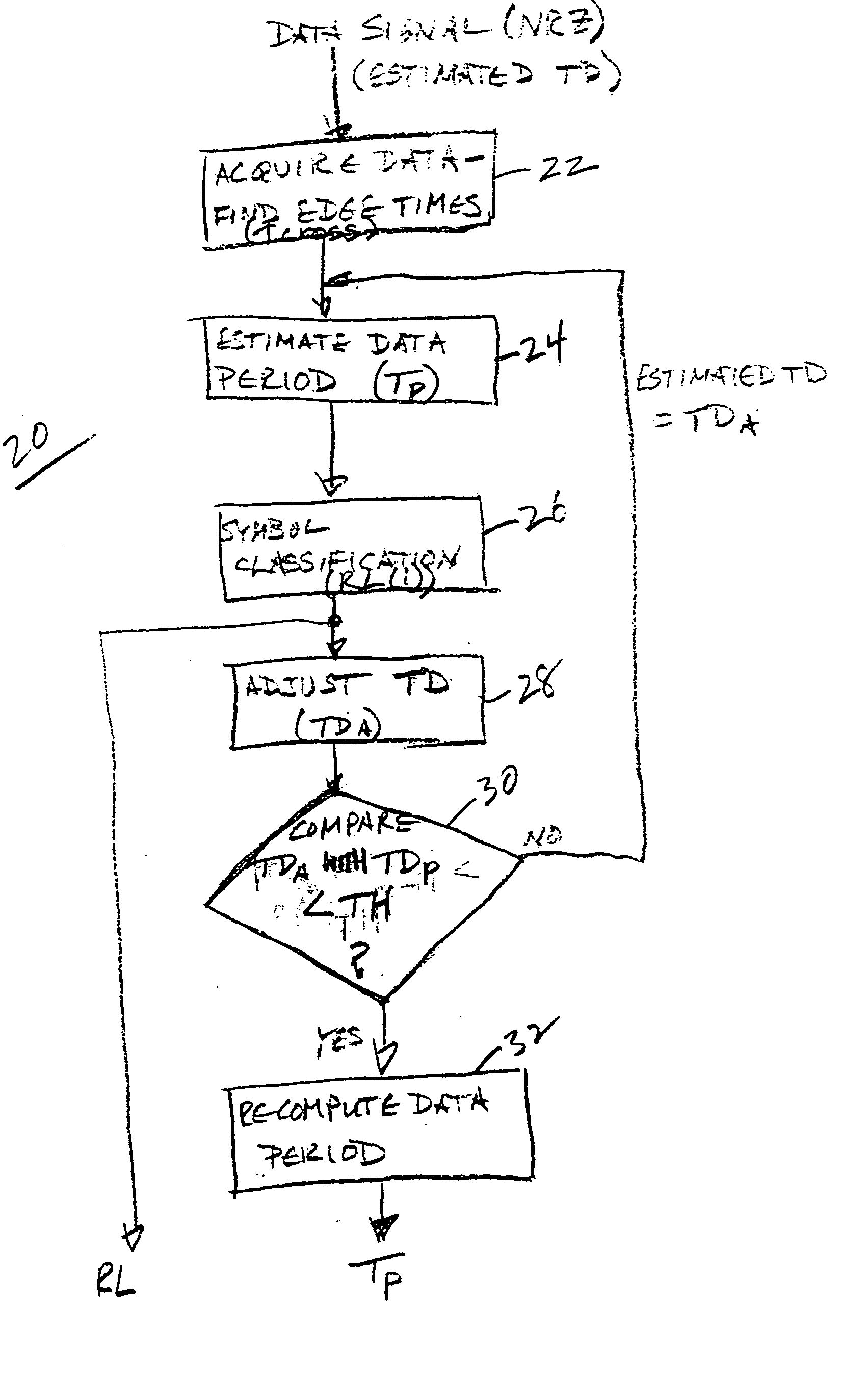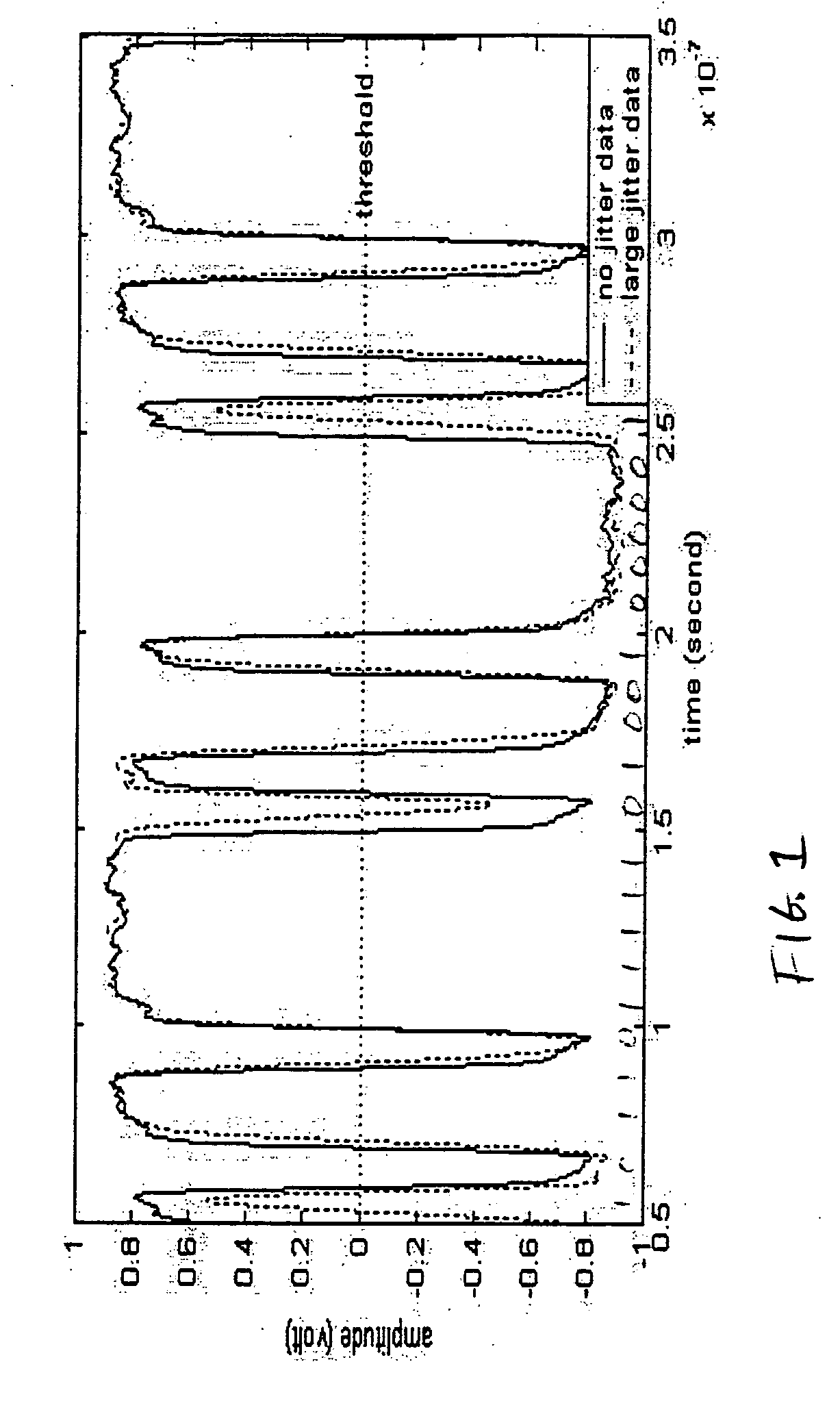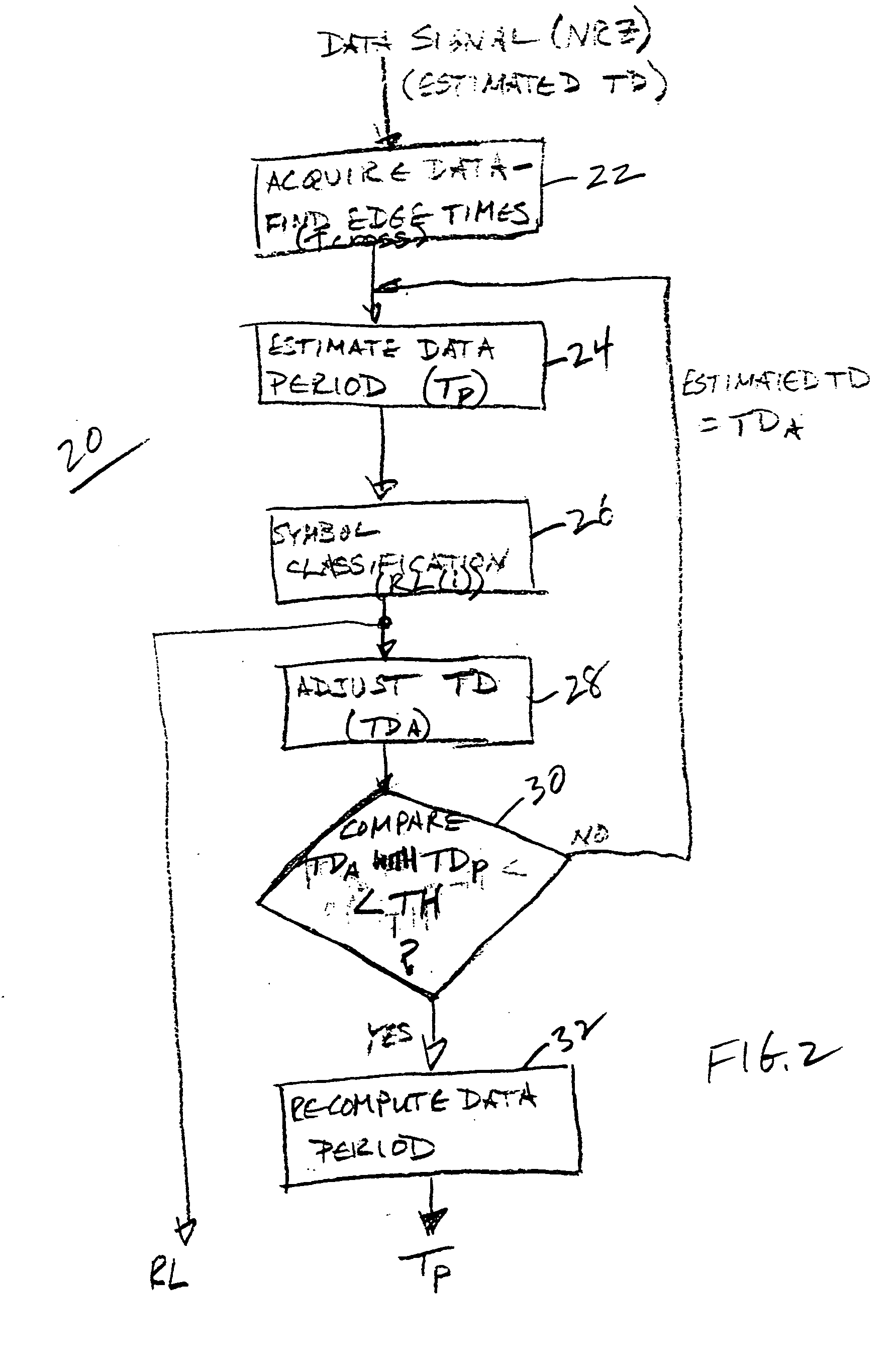Transition-density based time measurement method
a time measurement and density technology, applied in the direction of pulse characteristics measurement, amplitude demodulation, line-faulst/interference reduction, etc., can solve the problem of large inter-symbol interference in data signals, difficult to make a correct pattern match, and difficult to accurately measure tim
- Summary
- Abstract
- Description
- Claims
- Application Information
AI Technical Summary
Benefits of technology
Problems solved by technology
Method used
Image
Examples
Embodiment Construction
[0011] Referring now to FIG. 1 a nominal signal with no jitter, indicated by a solid line, is compared to the signal with jitter, indicated by a dotted line. The jittered signal is driven by the same clock as the nominal signal, but has crossing edges deviating significantly from the nominal signal. A Transition-Density (TD) value is the same for both signals, so an accurate measurement of data period relative to the period of the driving clock may be made based on the TD value. In most test scenarios the TD of the data stream is known or may be estimated closely using general knowledge of the signal. When the data pattern is known, the TD value may be calculated explicitly. For example among the widely used testing data sequences for various serial data standards—Fibre Channel, XAUI (10 Gbps attachment unit interface), etc.—K28.5− (0011111010) and K28.5+ (1100000101) when concatenated (K28.5−, K28.5+, K28.5−, K28.5+) has a TD of 50%, K28.7 (the clock-like pattern having transitions...
PUM
 Login to View More
Login to View More Abstract
Description
Claims
Application Information
 Login to View More
Login to View More - R&D
- Intellectual Property
- Life Sciences
- Materials
- Tech Scout
- Unparalleled Data Quality
- Higher Quality Content
- 60% Fewer Hallucinations
Browse by: Latest US Patents, China's latest patents, Technical Efficacy Thesaurus, Application Domain, Technology Topic, Popular Technical Reports.
© 2025 PatSnap. All rights reserved.Legal|Privacy policy|Modern Slavery Act Transparency Statement|Sitemap|About US| Contact US: help@patsnap.com



